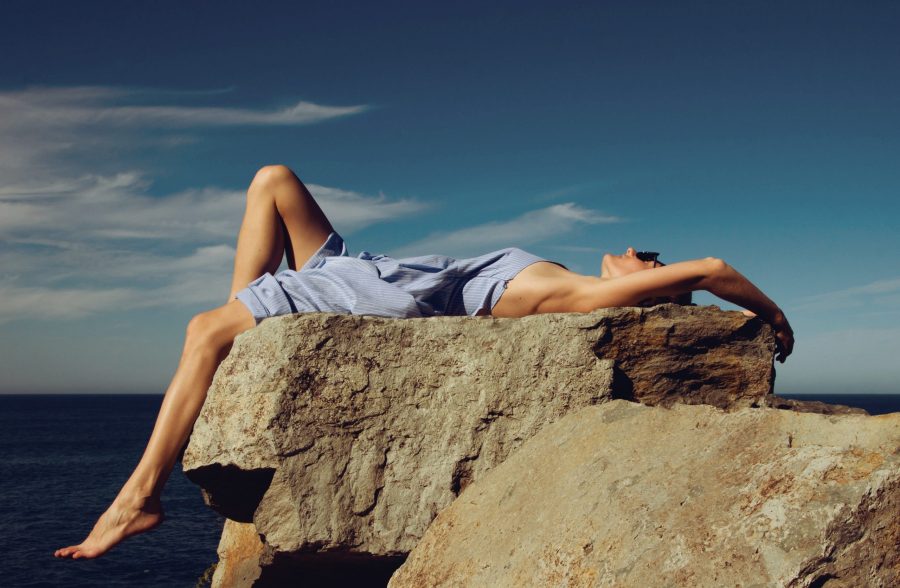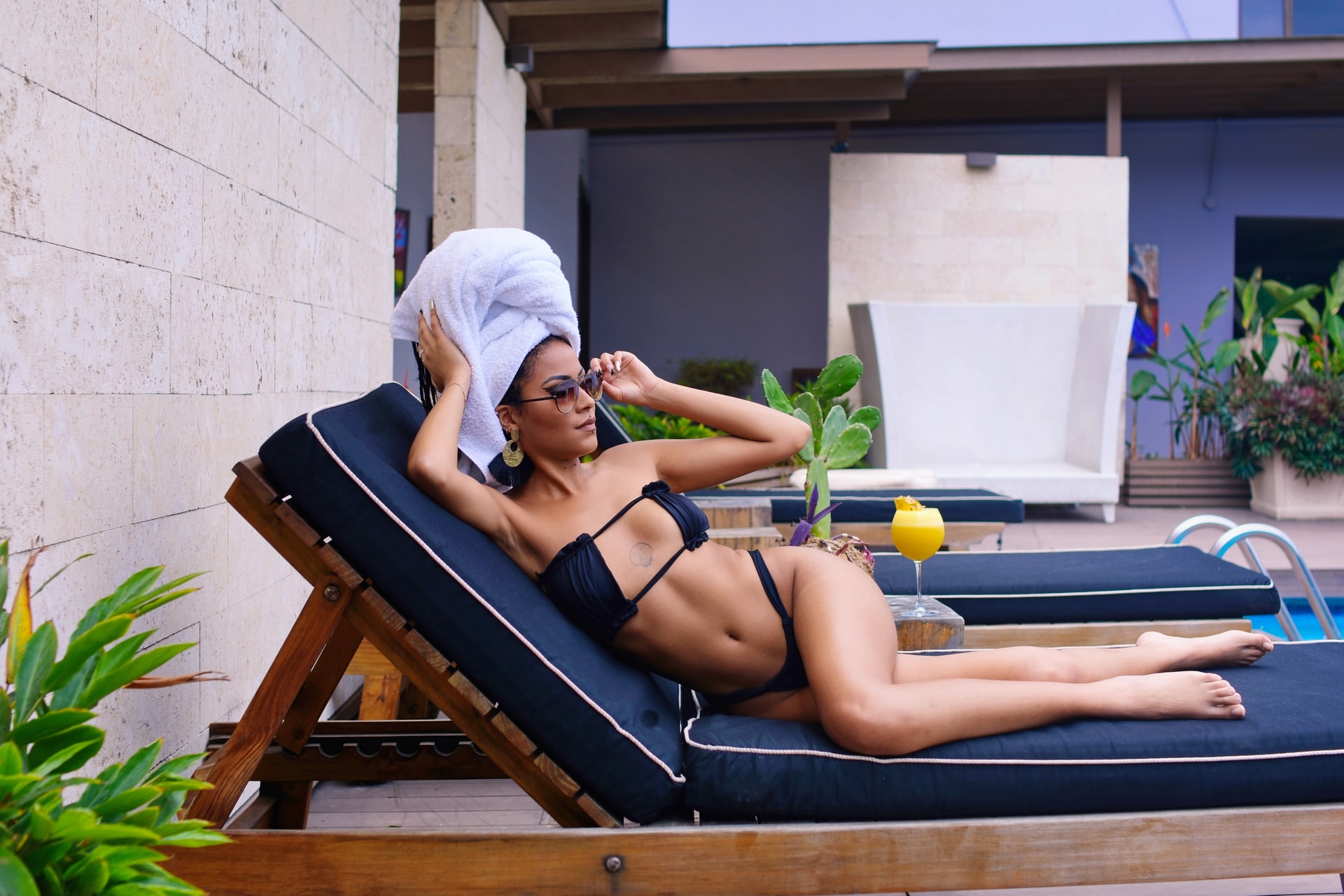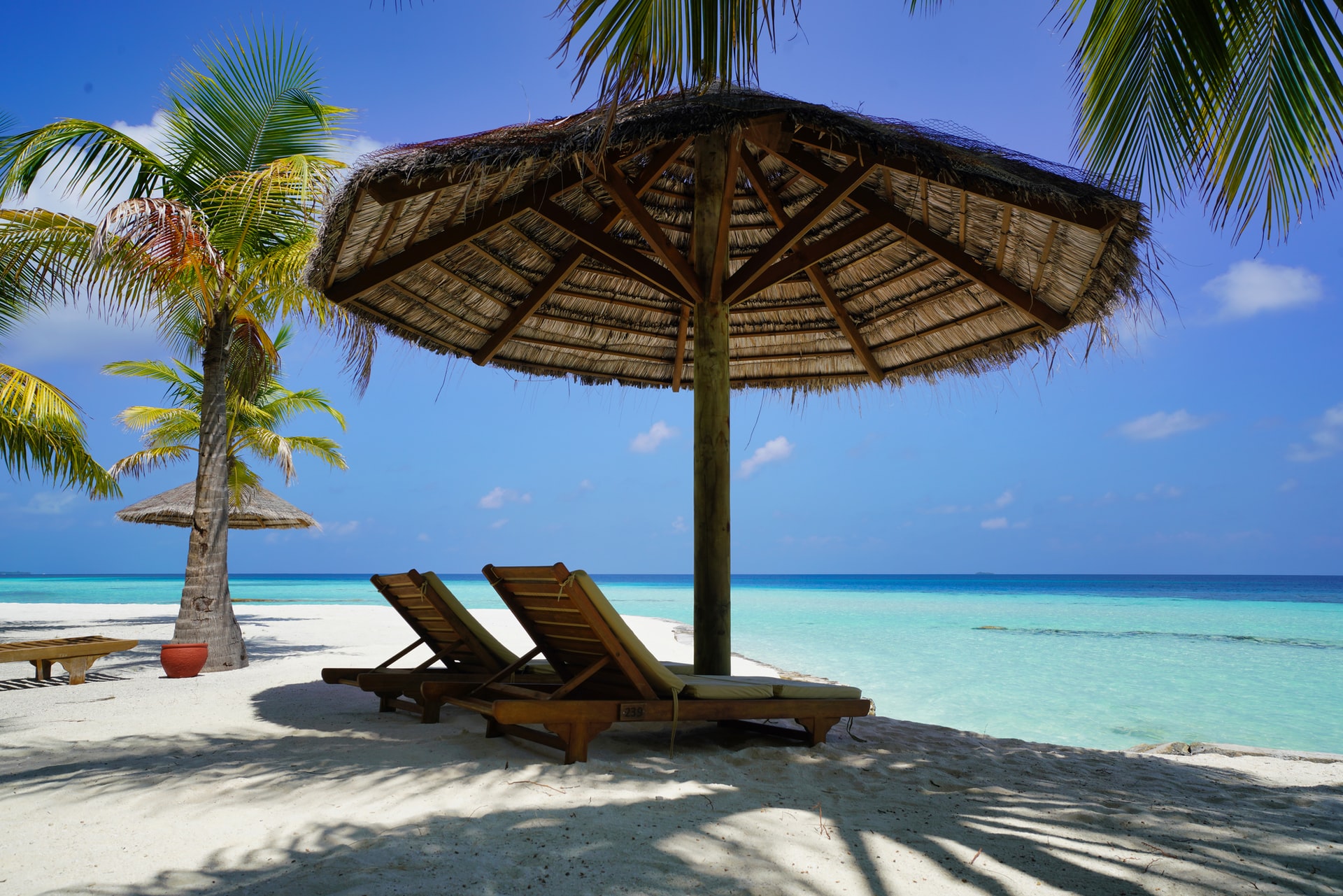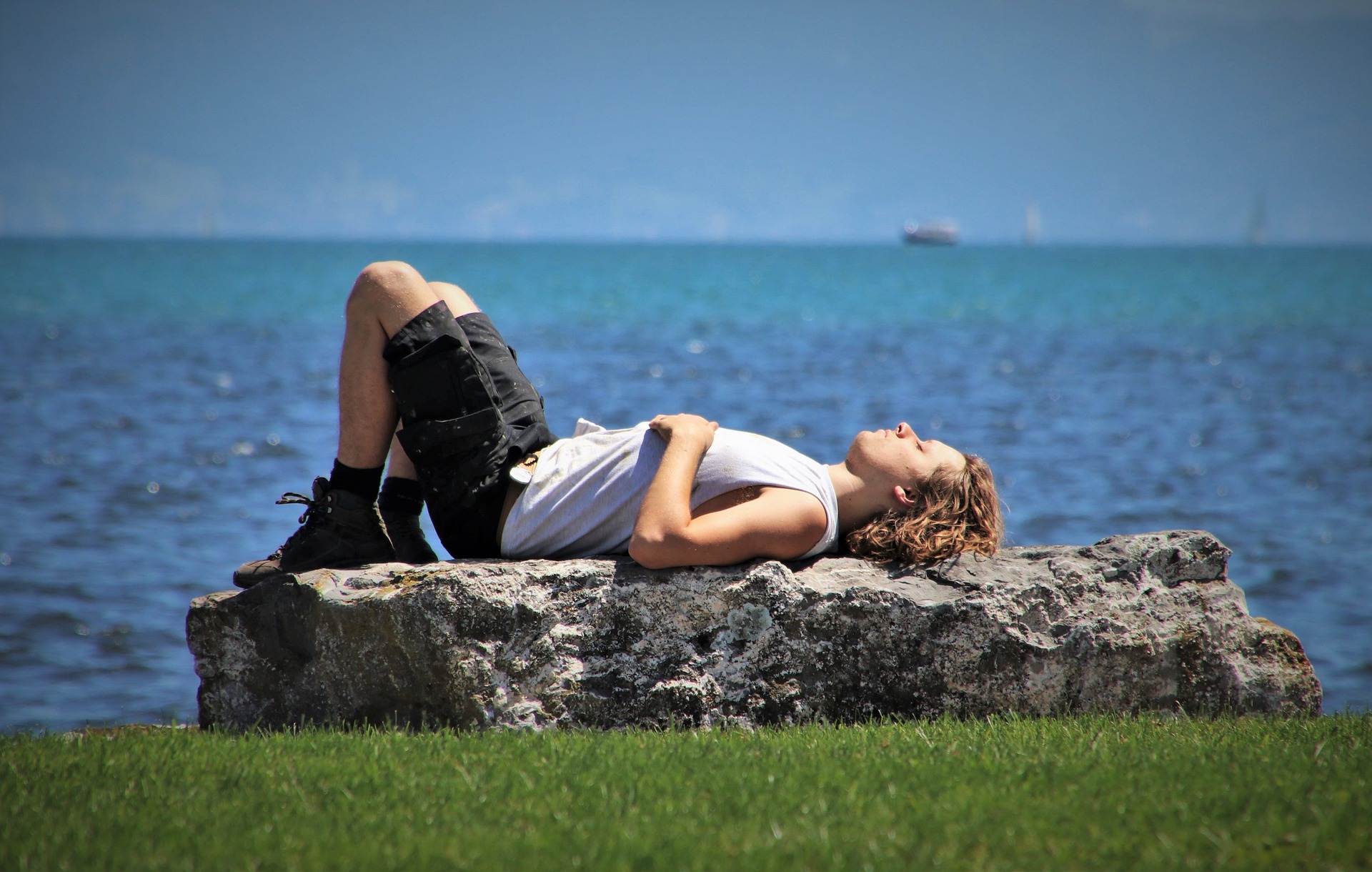
There’s something about a glowing, even tan that just feels healthy, don’t you think? The kind of tan you get when you’ve been away somewhere warm; it literally tells the world what an amazing, relaxed week you’ve had…
Our skin looks clearer, and we look slimmer. Blemishes disappear and bronzer and make-up seem totally unnecessary. It’s no wonder we associate it with health.
Yes, there are very few of us who would turn down that healthy skin glow.
Having a tan can boost our serotonin levels and help us produce vitamin D (ideal for teeth, bones and skin). But as you’re probably aware, the downsides to tanning are pretty significant.
Somehow, that doesn’t seem to put people off. So, let’s get into it. Is it possible to have a genuinely healthy tan? Why is a tan so appealing? And what can we do to reduce the risks associated with that golden glow?
What is it about a tan that’s so appealing?
In short, it’s culture and psychology. Which in some ways, is the same thing.
Before Netflix was a thing, and women couldn’t wear trousers (we’re talking pre-Industrial Revolution), pale skin was all the rage. The theory was that the paler you were, the less you had to work.
As in, you were loaded, waited on hand and foot. And probably kind of overweight; which was also a sign of wealth (describe Coolsculpting or EmSculpt’s appeal to them and you’d probably get some strange looks!).

Once we hit the 20th century, things changed. Travel became easier (thank you, planes) and paid holidays for workers became commonplace reality. Suddenly, being able to visit tropical climates and warm countries a few times a year was the best way to tell the world just how rich you were.
Staying pasty and indoors became a thing of the past; a tan presented you to the world as being free and wealthy enough to travel.
Things have moved on a bit since then, as tanning salons, home sunbeds and fake tans took over the market (though with some variation in quality amongst them). Despite that, our association of tanning with health and wealth has persisted.
That’s because a tan does more than just bronze our skin.
It creates a visible contrast between our skin and other parts of our body. The whites of our teeth and eyes look brighter and cleaner when we have a tan. And weirdly enough, having a tan makes our tongues look pinker (which is a sign of being well-hydrated).
This is why psychologists have found that, in general, we consider people to be more attractive when they’re tanned.
But isn’t tanning bad for your skin?
Honestly? Yes. There’s no way around it, despite what our psychology tells us.
Ultraviolet rays (UVA and UVB both) from the sun are incredibly stressful for the skin and the body. And the way that our bodies protect themselves is the tan itself. A tan forms to reduce the harmful effects of the sun on our DNA.
However. We’ve evolved over millennia to protect ourselves against the sun, and we were doing so long before anyone ever uttered the term “SPF”.
Yes, the sun’s rays are harmful, there’s no way around it. But we’re exposed to them all day, every day. Even indoors. We work hard for our holidays and our trips abroad. And there’s something to be said for the relaxation that comes with that feeling of the sun warming your face.
So, although it’s not possible to truly have a “healthy” tan, so long as we understand the risks and the ways we can minimise the damage, go ahead and enjoy the summer while you can. Just try to be as safe as possible (and that’s what we’re here to help with!).

How can I get a tan as safely as possible?
Total safety isn’t an option, but reducing your risk definitely is. Some of these tips might surprise you, others may seem obvious. But stick to all of them, and that’s about as safe as you’re going to get!
Wear SPF
SPF (Sun Protection Factor) is absolutely crucial if you’re going to spend time in the sun. And that’s whether or not you’re planning to tan!
Many people think that wearing SPF will stop you from tanning, but they couldn’t be more wrong. In fact, sunscreen will only protect you from burning.
The trouble with burning is, it basically cooks your skin cells. There is absolutely no scenario where cooking any part of your body is a good thing. And if you’ve ever had a mishap with a frying pan, you’ll know once something’s burnt, it’s pretty much ruined.
SPF helps your skin to delay burning; and the longer you can hold off from burning, the more time your skin has to tan. Wearing at least SPF 30, and reapplying it every two hours (set a reminder on your phone!) can prevent your skin from burning for a full day.
It will also protect you from the DNA damage that’s caused by UV.
You might wonder why we’re only recommending SPF 30. That’s because it filters out 97% of UVB rays. Surprisingly, SPF 50 filters out 98%, which isn’t a significant amount more.
What’s worse, wearing SPF 50 can actually convince you that you’re more protected than you really are, because it looks so thick you think you don’t have to reapply. However, if your skin is particularly dark, you’ll find that around SPF 15 is enough.
While we’re on the subject of SPF, make sure you’re getting the best stuff you can. Anything that says “broad spectrum” is an excellent choice, or products that say “high” with the UVA logo.
Exfoliate
If you’ve ever fake tanned, then you’ll already be familiar with the importance of exfoliating. Using a body scrub, or a wash or lotion that contains glycolic acid will help to remove any excess dead skin cells from your skin, and encourage a healthy turnover of new cells.
That being said, don’t use it directly before you go into the sun!

Try a Pigment Suppressor
As we tan, the skin cells that make our colour (melanocytes) become defensive as they try to protect us from the sun’s harmful rays. They can work on overload, which can cause them to become damaged.
As they continue to work hard, regardless of being damaged, they can cause age spots and brown patches on our skin. You might not notice them while you’re basking in the glow of your tan, but once it fades, they’re hard to miss.
Wearing an SPF will make a big difference between keeping these cells safe and preventing them from becoming damaged. However, using a pigment suppressing product can not only stop damage from happening, but improve the already damaged cells and help them work.
This way, your melanocytes work together at the same rate, and you’ll find your skin tone is more even.
Know Your Limits
Everyone has a unique cut off point with tanning, and it depends on your skin tone.
After a point, your skin gives up and simply can’t make any more melanin (the tanning pigment). Which means it’s actually totally pointless to lounge around in the sun and continue causing damage.
For most people, this point comes after around two or three hours.
However, if you’re fair-skinned and your eyes are light coloured, this point will probably be earlier. Persisting in your tanning efforts beyond this point is just putting yourself at risk for no reason.
If you’re not sure, keep it to two hours or fewer in the sun. With SPF protection.
Take a Break
It might seem like an obvious suggestion, but taking a break from tanning in the sun will reduce your sunburn risk, since it reduces the intensity of your exposure to UV light.
Basically, allowing your skin some time to recover from the sun will help you gain a healthier, more long-lasting tan.

Avoid Sunbeds
We get it, sunbeds seem like a quick and easy alternative to several hours in the sun. And yes, lots of salons advertise themselves as providing a “healthy” alternative to tanning in the sun.
But it’s a myth. Totally not true.
Most tanning beds use large amounts of UVA light and almost no UVB light (which is the part that stimulates Vitamin D production). Which is why sunbeds are actually much worse for your skin than tanning in the sun.
In fact, they increase your risk of skin cancer by up to 75%. We don’t know about you, but to us, that’s quite a scary statistic!
Fake It
Last but not least (in fact, probably the only truly safe, healthy way to tan), is fake tan.
No one wants to come out looking like a parody of Donald Trump or Ross Gellar, but self-tanners and fake tan lotions have come a long way in recent years.
The best way to achieve a tan that looks natural, but is totally fake, is to build your tan gradually. Yes, that requires patience, but no more than regular sunbathing does.
Gradual tanners often don’t have dyes in them. This means you have to carefully wash your hands after application, but there’s less chance of streaks and patchy areas.
As your tan starts off light, you can choose exactly how much you want to build it up until you reach the desired colour. And as for fading? Well, those glycolic acid body washes we mentioned earlier will help to slough away the dead skin and fade your tan as evenly as you’ve applied it.